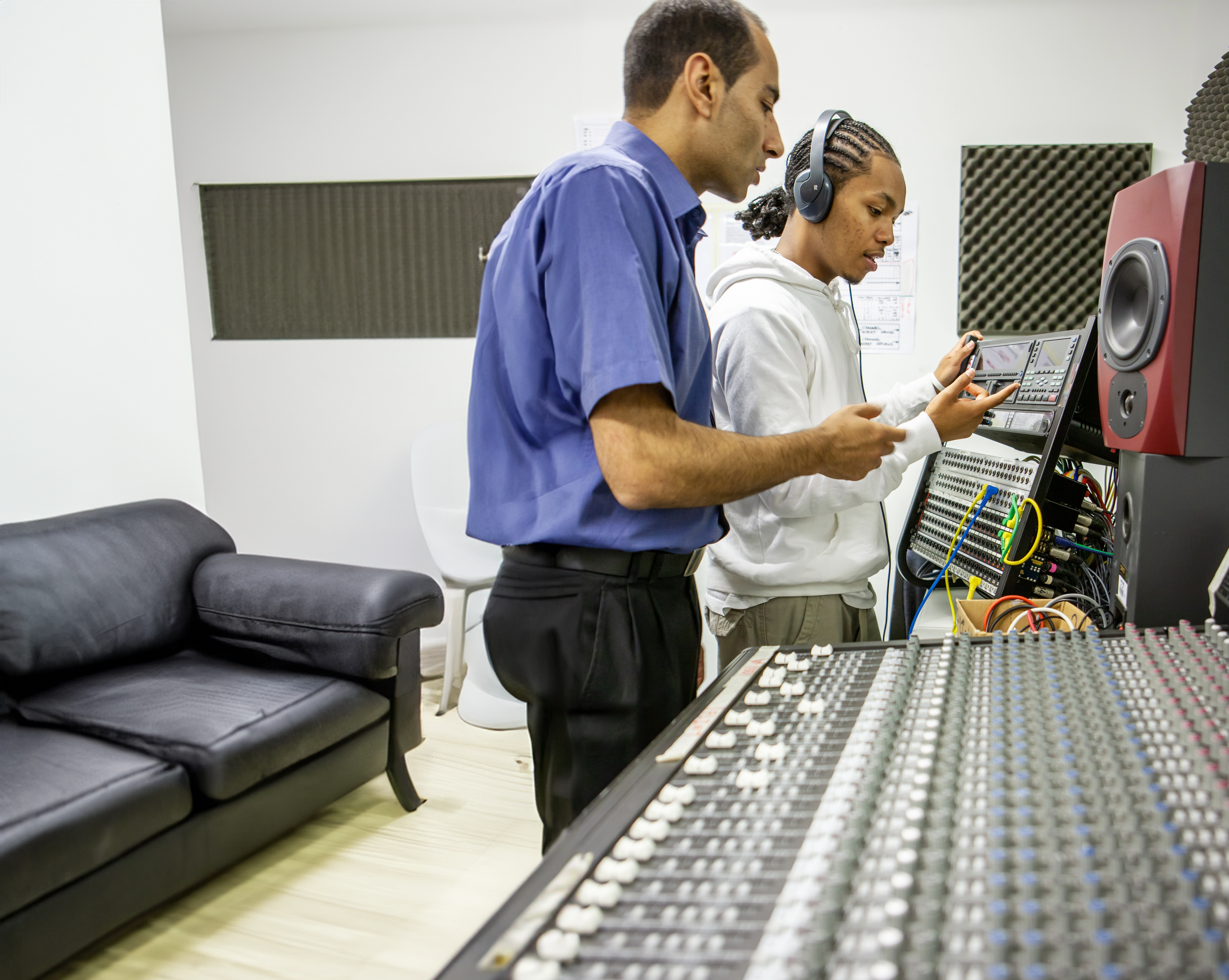
In the ever-evolving landscape of music production, the role of educators has never been more pivotal. As we dive into this concept, it’s crucial to understand how traditional and modern techniques intersect, and how educators stand at the frontlines of this convergence.
Anyone who stops learning is old, whether at twenty or eighty. Anyone who keeps learning stays young. The greatest thing in life is to keep your mind young
Henry Ford
Traditional Techniques: The Foundation
Traditional music production is steeped in analog methods. Analog recording equipment, such as reel-to-reel tape machines, large-format mixing consoles, and classic outboard gear like compressors and EQs, form the cornerstone of this approach. The emphasis is on recording live instruments and performances, in real-time, often with entire bands playing together to encapsulate the ‘live’ feel in recordings.
Key Elements of Traditional Techniques:
- Analog Equipment Proficiency: Understanding the workings of analog gear, from signal flow to tape saturation, is essential.
- Mic Placement and Room Acoustics: These are critical skills, involving a deep understanding of how sound behaves in different environments.
- Ear Training: The ability to discern subtle nuances in sound, a skill honed over years of attentive listening.
Modern Techniques: The Digital Revolution
The digital revolution ushered in a new era in music production making it more accessible and versatile. The introduction of Digital Audio Workstations (DAWs), software plugins, and MIDI technology has opened up new horizons for creativity and innovation. The power of modern music production lies in its ability to manipulate, edit, and process music in a non-linear fashion.. Its flexibility, accessibility, and a plethora of creative possibilities has allowed many more people to be involved in music production.
Key Elements of Modern Techniques:
- DAW Mastery: Proficiency in software like Ableton Live, Logic Pro, or Pro Tools is a must.
- Virtual Instruments and Sampling: These tools offer endless sonic possibilities, transcending the limitations of physical instruments.
- Digital Signal Processing: Understanding the intricacies of digital effects and processing techniques.
The Intersection of Old and New
The beauty of modern music production lies in its ability to blend the old with the new. Sampling, for instance, a cornerstone of modern production, often utilizing sounds from traditional recordings, and breathing new life into them. Similarly, the warmth of analog gear is frequently sought after in the digital domain, with plugins emulating vintage equipment.
The true artistry in music production education lies in harmonizing these two worlds. Educators must not only teach the technical aspects but also instill a sense of historical context and appreciation for the evolution of music production.
The Educator’s Role
Educators in music production must navigate these diverse techniques, ensuring students gain a comprehensive understanding. The key lies in teaching the foundational principles of traditional production while embracing the innovations of modern technology.

Strategies for Effective Teaching:
- Integrative Curriculum Design: Courses should be structured to provide a seamless blend of traditional and digital techniques, encouraging students to appreciate both.
- Hands-On Experience: Facilitating hands-on sessions with both analog and digital equipment allows students to understand the practical differences and similarities.
- Critical Listening and Analysis: Educators should conduct sessions where students analyze classic and contemporary tracks, understanding the production elements in each.
- Project-Based Learning: Assigning projects that require a mix of analog recording and digital manipulation can foster a practical understanding of how these techniques coalesce.
- Keeping Pace with Technology: Staying updated with the latest advancements and integrating them into the curriculum ensures that students are industry-ready.
- Encouraging Artistic Identity: Beyond techniques, helping students to develop their unique artistic voice is crucial. This involves nurturing creativity, experimentation, and personal expression.
- Balancing Theory and Practice: Educators should focus on a balanced curriculum that addresses both theoretical knowledge and practical application. Understanding signal flow in a traditional console is as crucial as mastering a DAW.
- Encouraging Experimentation: Students should be encouraged to experiment with both analog and digital realms. For instance, recording a live instrument and then manipulating it within a DAW. This fosters a deeper understanding of the interconnectedness of both worlds.
- Focus on Listening Skills: Critical listening is a skill that transcends technology. Whether it’s identifying the nuances in a vinyl recording or the clarity in a digital mix, training the ear remains a constant in music education.
- Adapting to Changing Technologies: Educators must stay abreast of the latest technological advancements and integrate them into their teaching. This keeps the curriculum relevant and engaging.
- Fostering Creativity and Originality: While techniques are essential, the end goal is to create music that resonates. Educators should encourage students to find their unique voice, using whatever tools necessary, be it a vintage synthesizer or a cutting-edge software plugin.









Camille Schowalter
Aspernatur sint odio rerum expedita id ex sed. Accusantium et aut commodi amet accusantium. Esse eveniet dolores voluptas et at id sed. Doloremque corrupti eos est tempore qui.
Iure iure repellendus quibusdam laboriosam qui omnis accusantium. Numquam quia earum nihil aut ipsa. Nihil nihil assumenda velit quia nulla quia.
Dicta id veniam aut earum pariatur voluptatibus aut. Molestiae aperiam qui aut dolor laudantium animi. Dolores quis vitae omnis quos sunt vero. Qui exercitationem et ipsam expedita est illum.
Stefanie Rashford
Aliquam massa ex, accumsan eget magna nec, aliquam porttitor lacus. Morbi lacinia felis sit amet ex viverra, id posuere velit molestie. Suspendisse rutrum nunc quis commodo condimentum.